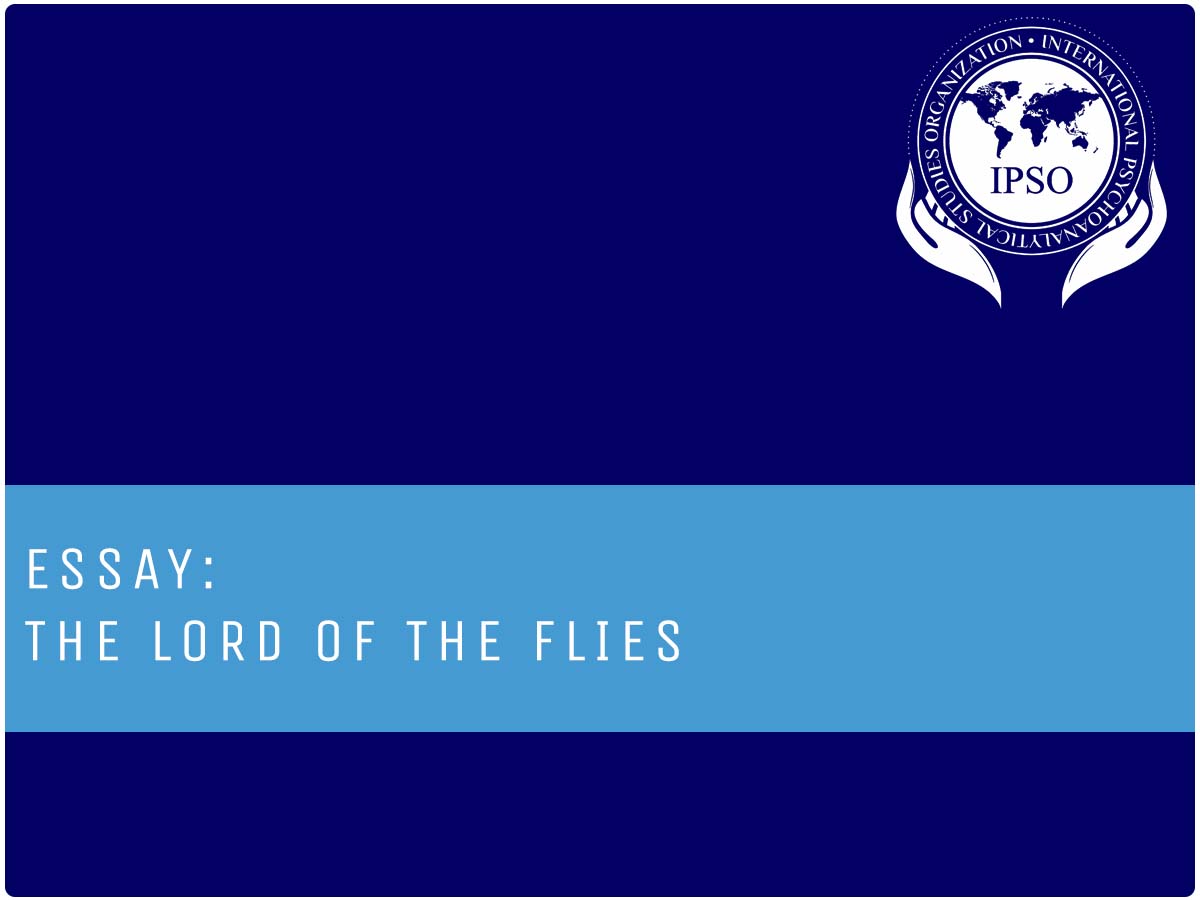
Essay: The Lord of the Flies
In the following essay, the novel The Lord of the Flies will be taken up, a classic of the seventies that tells the story of thirty young people in a latency period, who end up shipwrecked on a desert island, moving in this way to a world without adults; where while: some play and rest, others become “wild”, and others do their best to survive and be rescued.
From this novel, some psychoanalytic concepts that were studied throughout the semester will be reflect upon. For this, readings by psychoanalysts such as Erik Erikson, Garza Guerrero, Phyllis Tyson, Robert Tyson, and Charles Sarnoff, who theorized about the process of superego development and the latency period, will be used.
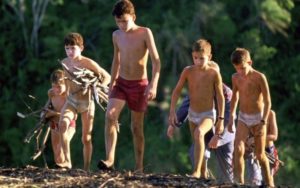 According to Erikson (1976), the latency period refers to the stage of Industriousness versus Inferiority, where the child is psychologically already a rudimentary parent who must begin by being a potential worker and provider. This is the novel can be identified mainly in children eleven years and older, who initially were able to divide the essential tasks to survive and at the same time feel endowed with pleasure by completing tasks through sustained attention and persevering diligence, this is reflected mainly in the leaders of each group.
According to Erikson (1976), the latency period refers to the stage of Industriousness versus Inferiority, where the child is psychologically already a rudimentary parent who must begin by being a potential worker and provider. This is the novel can be identified mainly in children eleven years and older, who initially were able to divide the essential tasks to survive and at the same time feel endowed with pleasure by completing tasks through sustained attention and persevering diligence, this is reflected mainly in the leaders of each group.
On the one hand, they were: the boss Ralph, who was chosen by the majority for his qualities to summon using the conch, along with Piggy and Simon, who were dedicated to building the shelters; and the second group was made up of Jack and the choir, who were dedicated to hunting and watching over the campfire. These duties could be carried out thanks to the principle of work that provide tools and skills, being the productive situation the one that at the beginning of history provided recognition by peers. In the first chapters, this recognition was essentially directed towards Ralph, who called all the children to a meeting to get to know each other and decide what had to be done, for example, build shelters to sleep in and make a fire so they could be seen and rescued.
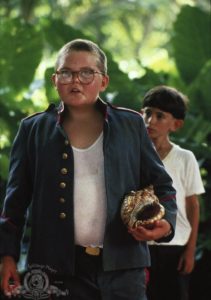 Likewise, these activities played an essential role in the criteria and adaptation to reality, functions of the superego linked to self-observation and self-evaluation (Garza Guerrero, 1989). These are reflected in the character of Piggy, who was always reviewing and evaluating his behavior and that of others, through internalized thinking on the part of his aunt who allowed him or not to perform certain actions, repeating phrases such as “that’s wrong, very bad” or “my aunt would not let me…, she would have told me that…” and he was even the one who was always waiting for the turn to be respected to talk about who had the conch.
Likewise, these activities played an essential role in the criteria and adaptation to reality, functions of the superego linked to self-observation and self-evaluation (Garza Guerrero, 1989). These are reflected in the character of Piggy, who was always reviewing and evaluating his behavior and that of others, through internalized thinking on the part of his aunt who allowed him or not to perform certain actions, repeating phrases such as “that’s wrong, very bad” or “my aunt would not let me…, she would have told me that…” and he was even the one who was always waiting for the turn to be respected to talk about who had the conch.
In addition to having, for example, Piggy, who was the first to realize that the children were now shipwrecked on a desert island without adults and to have the initiative to know the names of all those who were there or in need calling a meeting, Ralph was also there. In it, one can observe the internalization of values, of the parental moral code, the identification with these internal codes, and the concern for rules and justice, characteristic of the latent child (Tyson & Tyson, 1990). Since, after understanding that they were alone on an island and if something was not done to help the adults find them, they would never be rescued. For this reason, Ralph always emphasized complying with the rules that were agreed upon in the assemblies, he sought to maintain order and reminded his colleagues that they were civilized people who could reach agreements, for which a boss was necessary to seek the common interest and since he was the chosen one, he kept this position until the end, despite all the threats he faced.
On the contrary, it is hypothesized that Jack, the first in the church choir, who from the beginning felt humiliated for not having been elected chief, presents a flaw in the structuring of the superego. This suggests a change in self-esteem, varying their values and behaviors in different situations with different people, trying to manipulate the environment for gratification, and continued reliance on external objects as a means of controlling instinctual impulsive behavior and maintaining self-esteem (Idem). In this way, the embarrassment of not having managed to become chief dissipated superficially, when Ralph offered him to be in command of the choir, who would now be his hunters.
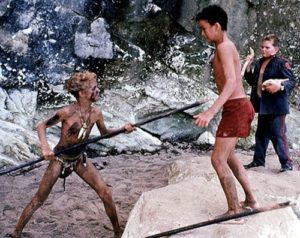 This task allowed Jack to discharge his aggressive energy in the search and hunting of the wild boar, which became an obsession that consumed him, since he projected his aggression onto the animal, referring to “if you go hunting, sometimes you feel wanting… […] you come to think that you are not chasing the hunt, but that… they are hunting you as if there was always something behind you in the jungle” (Golding, 2013, p. 75), thinking incredulously what to achieve catching the boar would make thisfeeling go away. However, due to the lack of authority, Jack’s superego would not become tolerant to the expression of the drives and therefore his primary and archaic introjects would not be modified, operating the pleasure principle, and demonstrating an inability to care about the impact of their aggression (Garza Guerrero, 1989).
This task allowed Jack to discharge his aggressive energy in the search and hunting of the wild boar, which became an obsession that consumed him, since he projected his aggression onto the animal, referring to “if you go hunting, sometimes you feel wanting… […] you come to think that you are not chasing the hunt, but that… they are hunting you as if there was always something behind you in the jungle” (Golding, 2013, p. 75), thinking incredulously what to achieve catching the boar would make thisfeeling go away. However, due to the lack of authority, Jack’s superego would not become tolerant to the expression of the drives and therefore his primary and archaic introjects would not be modified, operating the pleasure principle, and demonstrating an inability to care about the impact of their aggression (Garza Guerrero, 1989).
In addition to the above, there are the social components and since the tasks that had to be fulfilled in the world without adults were not constant, the exuberant imagination of children was not domesticated or subjected to social laws (Erikson, 1976). Therefore, when trying to say united as a society, they began to create myths, supposing the existence of a Wild Beast, to whom they had to bring an offering so that it would not harm them.
However, eager to hunt her down and thus put an end to their fear, one night they gathered around the fire dancing and singing “Kill the beast! Cut her throat! Spill her blood!” (Golding, 2013, p. 216). In this same scene were Piggy and Ralph, who despite having declined the offer to join the dance of Jack and his hunters, were under the threat of the sky that announced a storm, feeling anxious “to belong to that crazy community, but certain extent safe” (Idem). This is by the special case in which, when one is part of a group, one can led to participate in the exchange of common beliefs and to intervene in what is otherwise forbidden and frightening (Sarnoff, 1989).
Understanding that, from this conglomeration is that the murders of Simon and Piggy were executed. While the first was disguised as killing the Wild Beast, the second was an act planned, directed, and executed by Jack, who had turned the group of hunters into the means of massively implementing his primitive destructive fantasies (Idem).
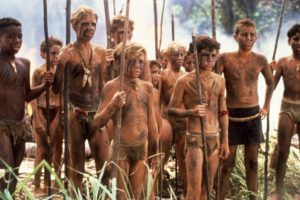 In conclusion, the novel written by Willian Golding, The Lord of the Flies reflects how the aggressive drive is always present and in each one of us. The reason why it isson important is that: children live their latency period and do not go directly to adulthood, that social norms and moral codes can be internalized, and these give way to the consolidation of an autonomous superego and protector of the own aggressiveness.
In conclusion, the novel written by Willian Golding, The Lord of the Flies reflects how the aggressive drive is always present and in each one of us. The reason why it isson important is that: children live their latency period and do not go directly to adulthood, that social norms and moral codes can be internalized, and these give way to the consolidation of an autonomous superego and protector of the own aggressiveness.
María del Socorro López Olmedo.
Reference
Erikson, E. (1976). Infancia y sociedad. Buenos Aires, Hormé.
Garza Guerrero, C. (1989). El superyó en la teoría y en la práctica psicoanalíticos. México, Paidós.
Golding, W. (2013). El señor de las moscas (Trad. Carmen Vergara). Alianza Editorial. (Trabajo original publicado en 1972).
Sarnoff, Ch. (1989). Latency. New Jersey, Jason Aronson Inc.
Tyson, Ph. y Tyson, R. (1990). Psychoanalytic theories of development: An integration. USA: Yale University Press.


